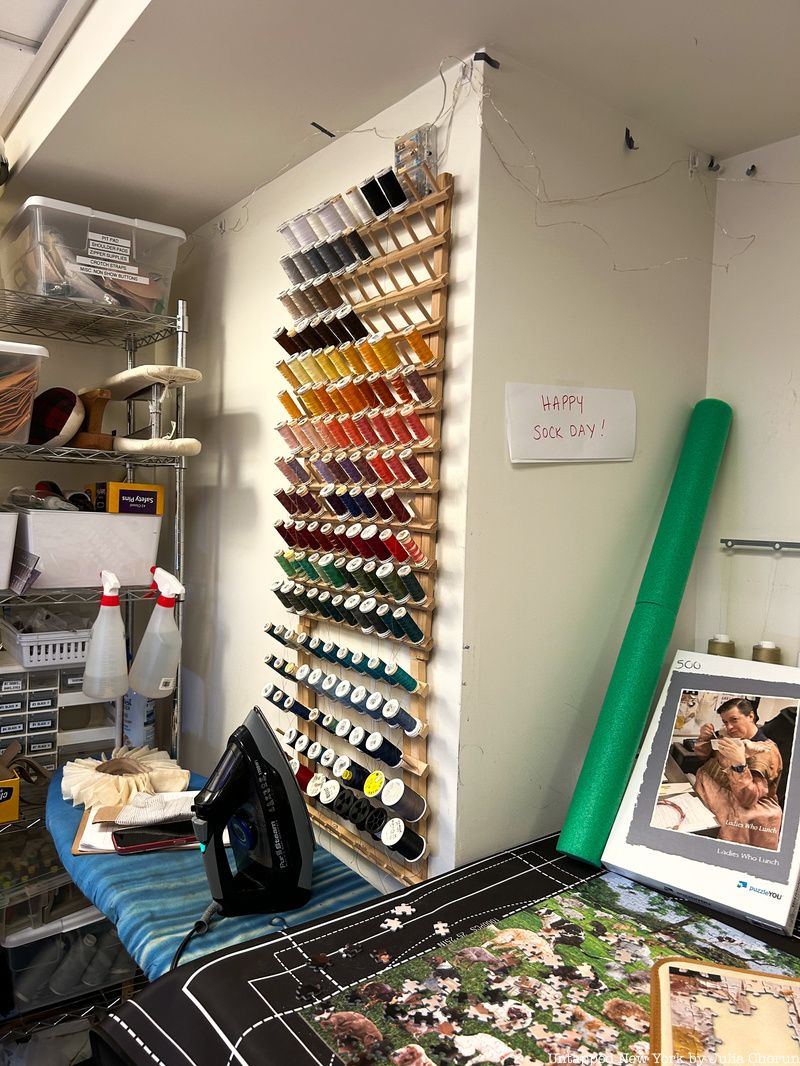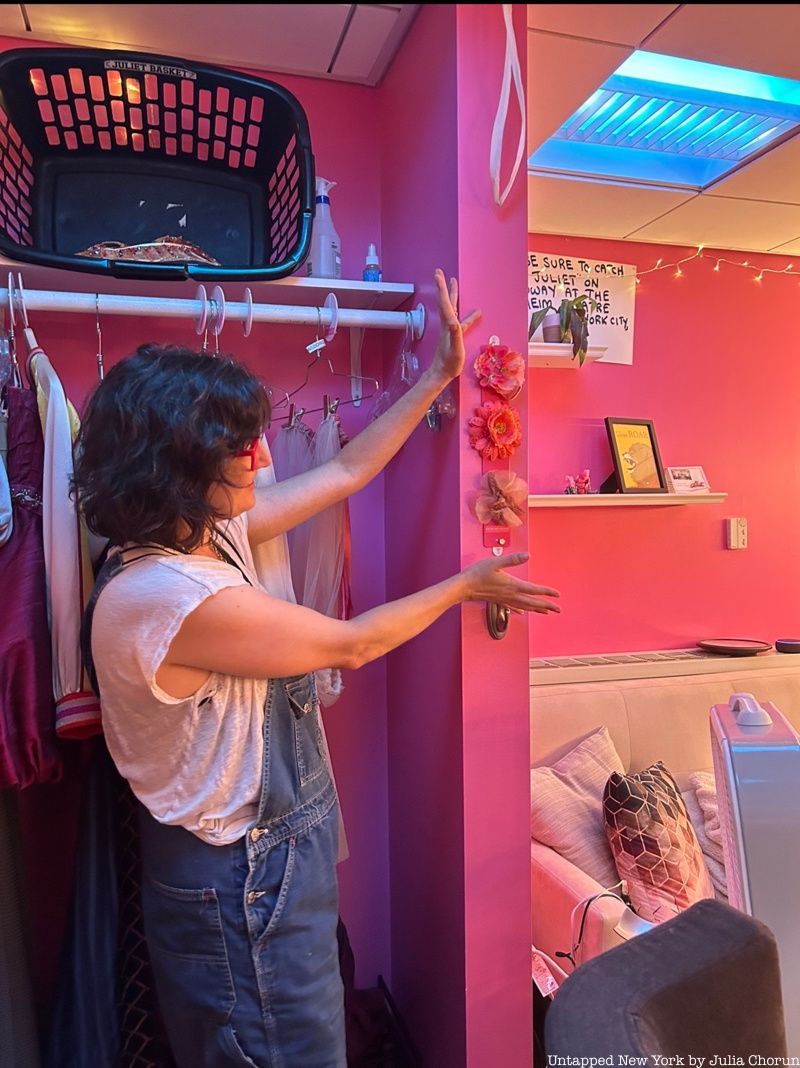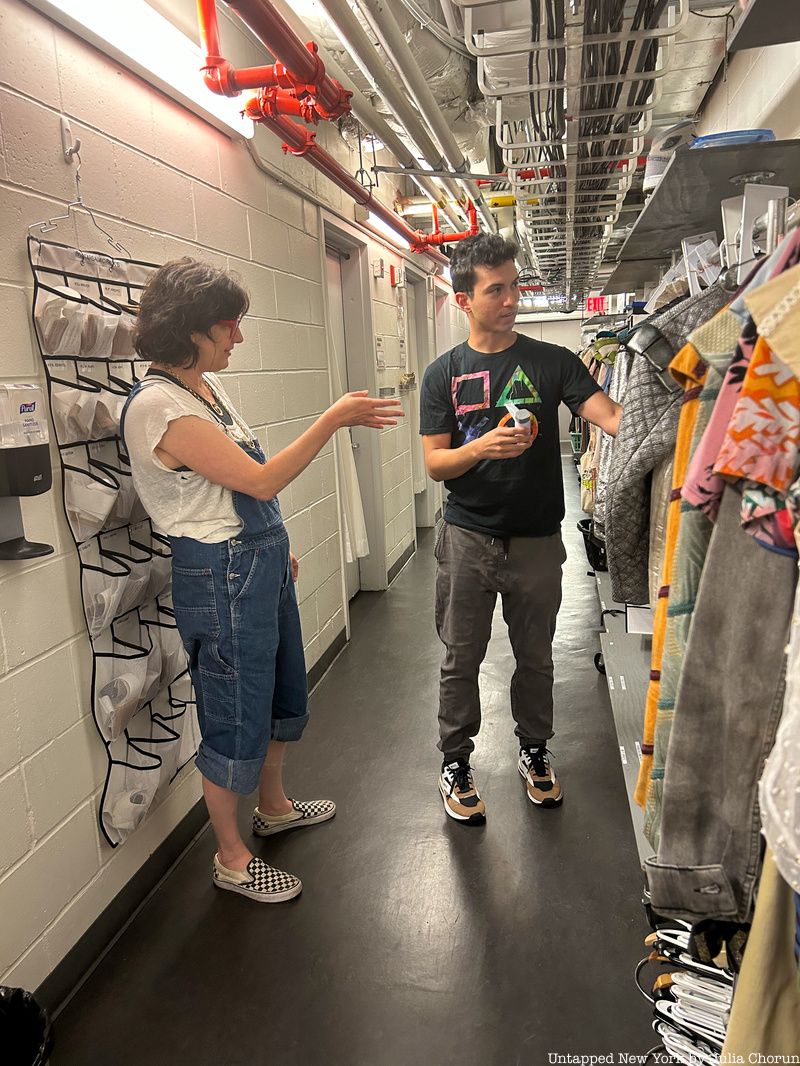Last Chance to Catch NYC's Holiday Notalgia Train
We met the voices of the NYC subway on our nostalgia ride this weekend!

If you’ve seen Broadway’s & Juliet, you know that the show is an extravagant display of glittering fabrics, bright pinks, and dramatic costume changes. In Untapped New York’s latest NYC Makers profile, we’re giving you a closer look at the play’s ensembles with the head costume designer, Paloma Young. Paloma has more than 10 years of experience in theater and design. She’s previously worked on plays like The Tempest and Heart of Robin Hood. Her work has been recognized and awarded on multiple occasions. In 2012 she received a Tony Award for Best Costume Design in a Play for her work on Peter and The Starcatcher. Working backstage on Broadway wasn’t always the plan, at least until Paloma realized her love for human stories and how clothing design can enhance those stories. Paloma shed some light on her own journey and took us on a backstage tour, one that included racks bursting with costumes, the stars’ dressing rooms, and the design office, where creative designs on paper are brought to life!

Paloma: I do, technically. I live in Brooklyn, New York. I live in South Brooklyn. And I also have an office there in downtown Brooklyn. But then I move around a lot based on what shows I’m working on and where in the world those are. I’m originally from the San Diego area and also a little bit from Maine. I ended up with one parent on each coast. And I moved to New York in 2008. I think there are things about New York that have always felt like home. Immediately when I got here, I loved public transit, even when it was disgusting. Because I don’t love driving, I don’t love car culture. I love, in a way, people being on top of each other and just sort of intersecting lives with so many different cultural and social strata, which doesn’t happen in Southern California.

Paloma: Every show that’s on Broadway, it’s usually had the design developed elsewhere. So that might have been in a regional theater, there might have been a workshop, there might have been an off-Broadway version of it. Each time we get new leads, I’m always looking, like, is there something specific about the way this person plays Juliet that is really asking for a variation on what we know we love and already works? So we do design adjustments based on new casting. We make design adjustments based on learning what falls apart, learning what becomes a difficult thing to change. Unlike TV or film, as long as a show is running somewhere, it is this living, breathing, changing organism. The design, the costume design is a living thing and it’s always changing.

Paloma: I think I’m always, with my designs, looking for a way that the clothing reflects the journey that that character is on. In that sense, yes, but in another sense, Juliet is actually, for most of the show, being controlled by another character. It’s actually the character of Anne Hathaway, who’s Shakespeare’s wife, who wants to rewrite the ending of the story. And so in a way, Juliet’s costumes are a reflection of the sort of girlish youth that Anne never got to have. You know, the traditional Romeo and Juliet narrative is quite serious and dark and dramatic, which is also very teenagery. But on the other end of that, what if it was just like a party? You know, those sorts of girls just want to have fun. And so it is actually a middle-aged woman’s fantasy of what her youth could have been. So Juliet is basically just in a series of party dresses and fun jackets and pink and this sort of hyper-girliness. In a way, she is Anne’s Barbie. By the end of the show, she’s doing her own thing and actually kind of ends up visually back where we might imagine a classical Juliet in Shakespeare’s Romeo & Juliet, being on the balcony. And it’s sort of in between. So it’s not Shakespeare’s version of Juliet, but it’s also not Anne’s version of Juliet.

Paloma: My favorite pieces in the show, I mean, I love the Romeo jacket, but I also love some of the other custom pieces. The show really celebrates individuality and I’m especially proud of all of the players who each have individual looks that are expressive of their personality. They have a lot of detail. They do custom painting and custom setting and mixes of vintage pieces and handmade pieces. And I think that that represents a level of personal expression that you don’t see in a lot of ensembles on Broadway. I like that.

Paloma: It’s part of my job to see the show. The first time there was an audience there would have to be a big emergency at home to have that not be the case. But I could not count the number of times that I’ve seen different versions of this show. We opened it in Manchester in 2018 and then on the West End, and then in Toronto, and then on Broadway. And I’ve actually never seen the Australian version of the show, because it didn’t work with my schedule, but I did go to Australia and do fittings with all of the actors. But usually, part of the process of the design is seeing the clothes under show conditions and watching them move, and understanding the reception by an audience.
Paloma: It’s hard to say how exactly I ended up here, but I would say none of the above. I was always into art and drawing and painting, and I was always into costumes in terms of like my Halloween costume. I would spend a really long time hand-beading little petals for a fairy costume or making my own wings. And so that was an interest of mine. I didn’t see it as a job. My mother was a surfwear designer for Ocean Pacific in the 80s. So I was around that element of the fashion world, very different from what I do now, but at least I was around swatches and sketching and the concept that you could design a thing and eventually that would become something 3D and real. And then in college, I was a history major. I thought I might be a librarian or a historian. I love human stories. And I love researching. And I took costume design classes for fun as my elective. I sort of realized that maybe I could do costume design as a job and I ended up going to grad school for costume design and then that sort of is how I ended up where I am now.
I think the difference between Halloween and fashion in the work that I do and that other designers do is we’re part of crafting a narrative and that’s where I think my love comes into play. It’s the marriage of, “This is pretty, this is a great cut, this is a great fabric, this is a great pattern.” I know how to use rhinestones on stage. There’s a lot of practical knowledge, some of which you pick up as you’re doing, some of which you can be trained for in school, that overlaps very much with fashion especially. There’s a marriage of all of that practical knowledge and creativity, you know, fashion designers are very creative. But taking that and being like, “How does this thing that I’m designing tell a story?” And sometimes it’s about creating the less fabulous thing because that thing might not allow the audience access emotionally to a character if [the character is] basically wearing a parade float.

Paloma: So this show actually has several periods. It’s Elizabethan, it’s also Italian Renaissance which is for when Romeo and Juliet takes place, which are different styles. And then there’s also the 90s, the 2000s, in terms of like when Max Martin was writing his music and when he’s still writing his music. So it’s contemporary, like the late 80s until now. So I’m researching boy bands at the same time I’m researching like traditional Elizabethan doublets or pumpkin hose or pieces. But none of the shows that I do have really been, it’s never been super important to be period accurate. And it’s more about how a period can be manipulated in order to tell the story of the characters more. There’s a lot of freedom there and that means I don’t spend a ton of time verifying the veracity of like what year was this or I need specifically like blouses from the late 16th century. Or they say like, you know, the US is the melting pot of the world, right? So my costumes aren’t a melting pot, they’re a salad. Where it’s all mixed together and it has a unique flavor when you eat it, but actually, it’s like, you can see the carrot over here. That’s the way that I tend to mix periods.

Paloma: You know, I always feel like my favorite costume design experience is the one that’s right in front of me. For the future though, there’s something I’m looking forward to. Last year we started the development of a Notebook musical, The Notebook. The hope is to bring it to Broadway. That show is actually very, very different from & Juliet. We’ve reset the period from the movie. So the early versions of the characters live in the 1960s and the 1970s, which makes the later version of the characters live sort of now. And the costumes are basically invisible. There’s this challenge of giving audiences a feeling that all of these people are like sexy, and in love, and conflicted, but are also very relatable to today. I’m really excited about fine-tuning that design and putting it back on stage.

Paloma: So in terms of like, untapped in the theater district, it’s not that it’s an unknown place, but the bar at Bubble Gump is a place you can go have a conversation where you will not run into any other theater people….The place where we spill the tea.
Paloma: So as much as I said I love public transit, my job at one point brought me to Shanghai. And the subway in Shanghai has air conditioning in the waiting area. That’s my dream for New York.
To see Paloma’s hard work in action, you can get tickets to Broadway’s & Juliet here!
Next, read about How The Squares Along NYC’s Broadway Got Their Names
Subscribe to our newsletter